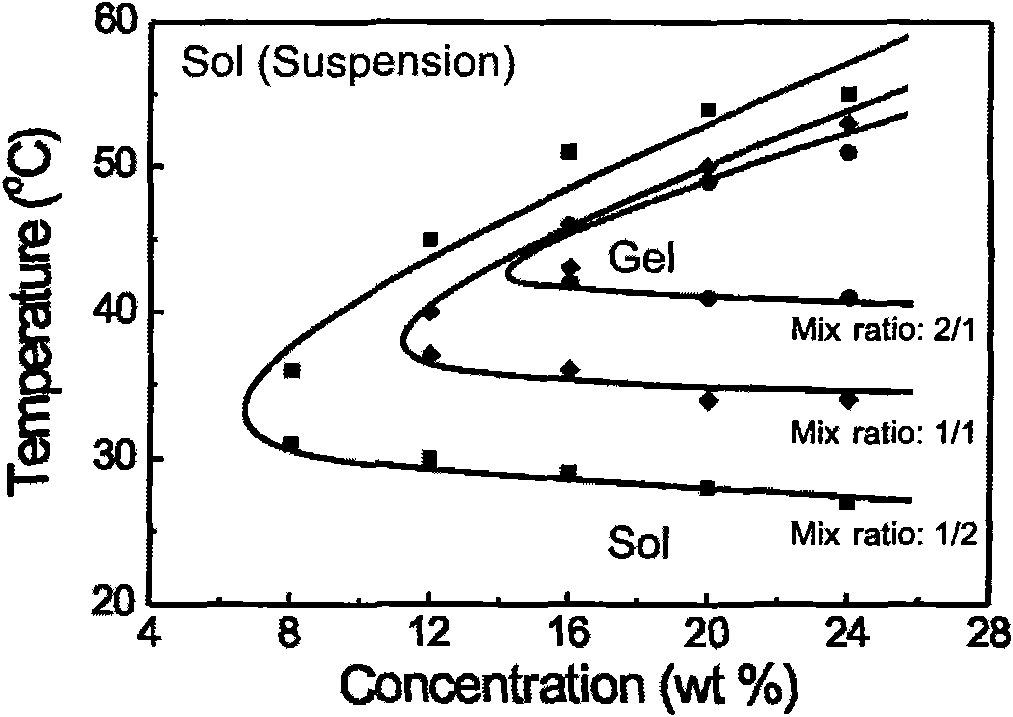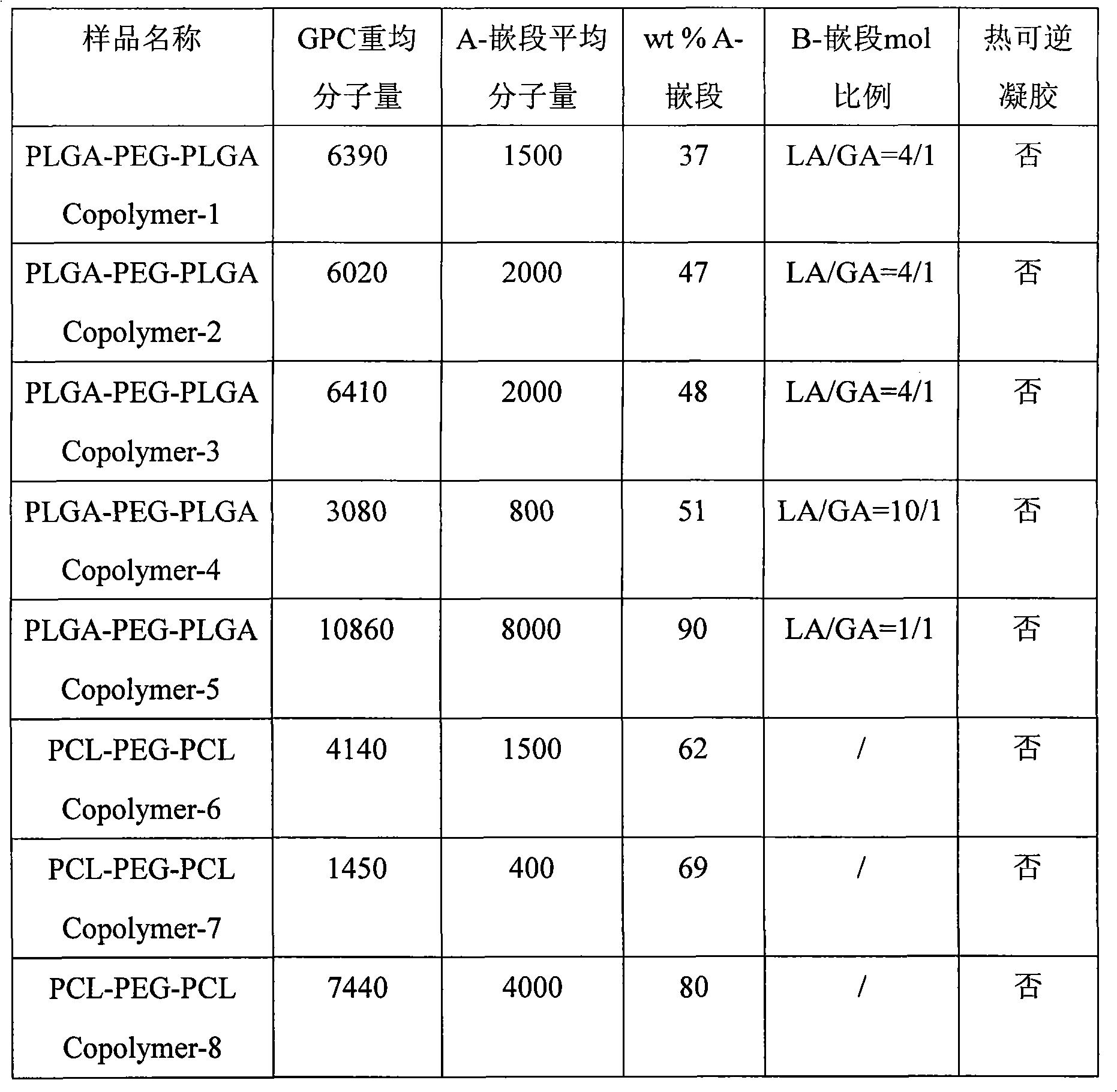Physical cross-linking hydrogel composition and preparation method and application thereof
A physical cross-linking and hydrogel technology, which is applied in the fields of polymer materials and medicine, can solve the problems that the gelation temperature is not suitable for human body application, no longer has heat-sensitive gelation, and loses sol-gel transition. To achieve the effect of facilitating medical application, expanding the scope of use, and good biocompatibility
- Summary
- Abstract
- Description
- Claims
- Application Information
AI Technical Summary
Problems solved by technology
Method used
Image
Examples
Embodiment 1
[0065] Add PEG (1500) in a 250ml three-necked flask, heat the oil bath to 150°C, and vacuum filter for three hours under stirring to remove the residual moisture in the PEG, then add DL-lactide and After glycolide was heated under vacuum to make it melt completely, 120 μl of stannous octoate was added, the temperature of the oil bath was raised to 160° C., and the reaction was continued for 24 hours under an argon atmosphere. After the reaction was completed, vacuum filtration was performed for two hours to remove unreacted monomers and low-boiling products. The initial product was dissolved in dichloromethane solution and precipitated with ether, the yield was about 80%. Measure the number-average and weight-average molecular weight (M) of the BAB block copolymer (PLGA-PEG-PLGA, Copolymer-1) by gel permeation chromatography (GPC) (using polystyrene as a standard sample). n ,M w ) are 5510 and 6390 respectively, molecular weight distribution coefficient (M w / M n ) is 1.16...
Embodiment 2
[0067] Add single-ended methoxypolyethylene glycol MPEG (550) into a 250ml three-necked flask, heat the oil bath to 150°C, and vacuum filter for three hours under stirring to remove residual moisture in MPEG, and then add a molar ratio of 3 : 1 DL-lactide and glycolide, heated under vacuum to make it completely melted, then added 120 μl of stannous octoate, the oil bath was heated to 160° C., and the reaction was continued for 24 hours under an argon atmosphere. After the reaction was completed, vacuum filtration was performed for two hours to remove unreacted monomers and low-boiling products. The initial product was dissolved in dichloromethane solution and precipitated with ether, the yield was about 85%. Measure the number-average and weight-average molecular weight (MPEG-PLGA, Copolymer-14) of the BA block copolymer (MPEG-PLGA, Copolymer-14) by gel permeation chromatography (GPC) (using polystyrene as a standard sample). n ,M w ) are 3550 and 4620 respectively, molecula...
Embodiment 3
[0069] Add polyethylene glycol (1000) and PLGA (M n 4750, M w 6020, a mixture of LA / GA=1 / 1), heated under vacuum to melt completely, then the oil bath was heated to 160°C for condensation reaction for 18 hours. After the reaction is complete, the initial product is dissolved in dichloromethane solution and precipitated with a large amount of ether, and the yield is about 85%. Measure the number average and weight average molecular weight (M) of the BAB block copolymer by gel permeation chromatography (GPC) (using polystyrene as a standard sample). n ,M w ) are 6520 and 8340 (PLGA-PEG-PLGA, Copolymer-15) respectively, molecular weight distribution coefficient (M w / M n ) is 1.28. The copolymer itself does not have the property of thermally reversible gelation in water.
PUM
| Property | Measurement | Unit |
|---|---|---|
| Solubility | aaaaa | aaaaa |
| Resolution | aaaaa | aaaaa |
Abstract
Description
Claims
Application Information
 Login to View More
Login to View More - R&D
- Intellectual Property
- Life Sciences
- Materials
- Tech Scout
- Unparalleled Data Quality
- Higher Quality Content
- 60% Fewer Hallucinations
Browse by: Latest US Patents, China's latest patents, Technical Efficacy Thesaurus, Application Domain, Technology Topic, Popular Technical Reports.
© 2025 PatSnap. All rights reserved.Legal|Privacy policy|Modern Slavery Act Transparency Statement|Sitemap|About US| Contact US: help@patsnap.com



